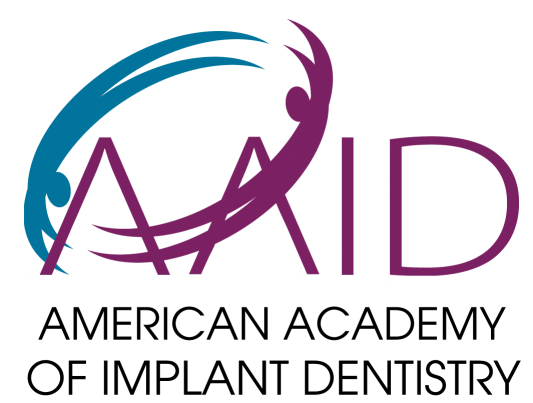Invisalign has revolutionized orthodontic treatment, with over 10 million patients achieving a straighter smile through clear aligners. However, no solution is perfect for every case. As providers, we get many good questions at Lansdowne Family Dental about the viability of Invisalign aligners for complex issues.

So what exactly are the limitations of Invisalign treatment, and is it the best choice for fixing specific smile imperfections? Let’s explore which types of malocclusion can or can’t be remedied by Invisalign.
Invisalign Limitations
While Invisalign clear aligners have advanced greatly in recent years with innovations like SmartTrack material and optimized 3D planning software, some limitations around the technology remain.
The main restrictions of Invisalign include:
| Type of Imperfection | Limitation Summary |
| Extreme rotations | Aligners are less reliable for teeth tipped over 45 degrees |
| Vertical movements | Significant vertical shifts are very challenging |
| Crossbites | Best suited for mild-to-moderate anterior crossbites |
| Open bites | Mixed effectiveness in correcting larger open bites |
| Overbites | Slow/unpredictable for overbites exceeding 5mm |
- Rotations over 45 degrees rarely achieve full correction
- Major vertical alignment changes often need fixed braces
- Severe crossbites should combine aligners with fixed braces
- Significant anterior open bites may require supplemental treatment
- Deep overbites over 5mm may benefit from wisdom teeth removal
These limitations don’t mean Invisalign can never be useful for such cases. However other interventions may maximize outcomes for dental extremes misaligned well beyond basic realignment needs.
Why Can’t Invisalign Correct Everything?
Invisalign works differently than traditional wired braces. Rather than brackets and bands physically linked by an archwire to pull on teeth, Invisalign instead uses sequential plastic aligners.
Each aligner tray applies light force onto teeth, progressively shifting position over time. New trays are swapped every 1-2 weeks to advance the incremental movement until reaching the desired placement.
While this sequencing method works well for minor-to-moderate misalignments, certain extremes require targeted forces in multiple directions not easily achievable through static aligner trays.
Fixed braces made from brackets and archwires allow our dentists to control force amount and direction along each tooth’s root. This works better for greater adjustments like closing gaps over 6mm wide or twisting severely turned teeth within the gums and bone.
Enhancing Invisalign With Supplemental Treatments
Rather than ruling out Invisalign completely for difficult cases like open bites or overcrowding, orthodontists now tailor combined solutions:
- Using fixed braces just on the problem teeth first – Then transition to Invisalign for finesse. The blend minimizes overall aesthetic and lifestyle impact versus full-on braces.
- Combining in elastics or buttons – Strategically adds tension against specific problem teeth/areas during Invisalign trays for better control.
- Reshaping problem teeth – Contouring or slenderizing via dental bonding/veneers helps crowded teeth fit together better before Invisalign trays shift them into final alignment.
These supplemental options expand possibilities, allowing adults with tougher imperfections access to Invisalign’s advantages of avoiding conspicuous wires. Our treatment planning software and experience let us integrate auxiliary techniques for maximizing your particular situation.
When Is Invisalign Still a Great Fit?
Despite limitations with extreme cases, Invisalign brings excellent, fairly predictable results for issues like:
- Mild/moderate crowding or gaps
- Top front teeth overlap under 2.5mm
- Bottom front teeth overlap under 2mm
- Mildly crooked/twisted teeth
- Some crossbites of front 6 teeth
Within these ranges requiring simpler movement, smart Invisalign planning and patient compliance can achieve beautifully improved smiles non-invasively via sequenced aligner trays alone.
If your imperfection severity falls in the moderate zone, clear aligners likely remain an excellent discreet route for boosting smile aesthetics and bite function. Our Lansdowne Family Dental team assesses your anatomy and dental goals to determine if Invisalign is right for your situation.
| Well-Suited Smile Issues | Details |
| Crowding/Gaps | When less than 6mm in width size |
| Overjet | Top teeth overlapping under 2.5mm |
| Overbite | Bottom teeth overlapping under 2mm |
| Crooked Teeth | Mild-moderate twisting or tilting issues |
| Crossbites | Frontal 4-6 teeth with shift under 3mm |
- Crowding or spaces less than 6mm wide
- Top front teeth overlapping under 2.5mm
- Bottom front teeth overlapping under 2mm
- Mild-moderate crooked or twisted teeth
- Partial crossbites of front 4-6 teeth
For addressing more dramatic orthodontic problems, discuss combo treatment plans with our team to maximize outcomes.
Closing Thoughts on Invisalign Limitations
While unable to fully correct every extreme dental misalignment, Invisalign clear aligner therapy still improves smiles non-invasively for over 10 million patients (and counting!). Mild-to-moderate issues often see great enhancement through sequenced trays over 12-18 months of consistent wear.
Work with your Lansdowne Family Dental orthodontist to determine if Invisalign is appropriate for your specific cosmetic and bite goals. With innovative tools and techniques now available, limitations occur less often – but should be considered when planning treatment.
Let us know how we can help assess if Invisalign offers the discreet straightening solution you’ve been looking for. Contact our office to get started!






